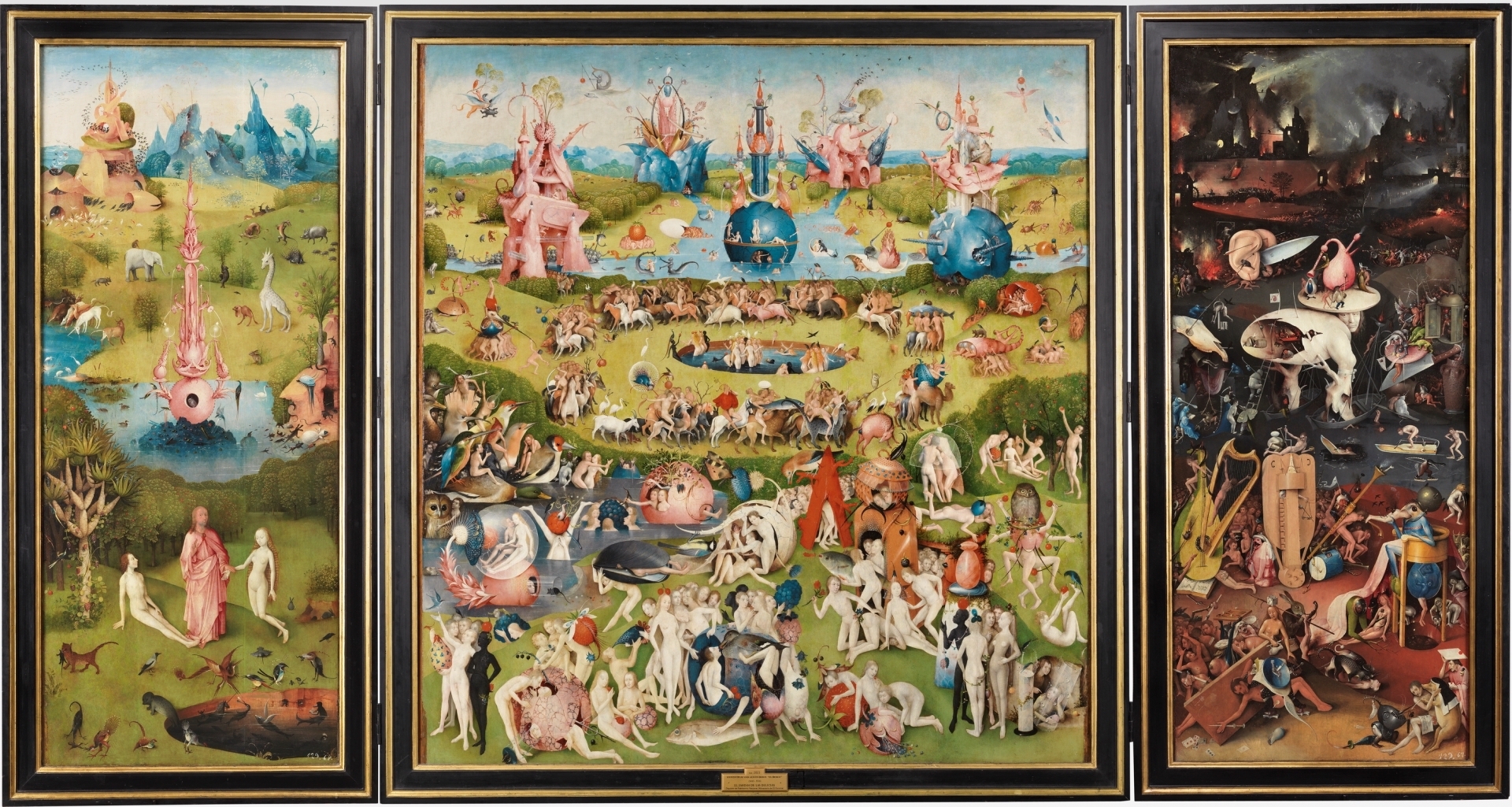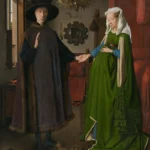
“The Garden of Earthly Delights,” a mesmerizing triptych painting created by the renowned Early Netherlandish artist Hieronymus Bosch between 1490 and 1510, is a masterpiece that has captivated and mystified viewers for centuries. This remarkable artwork, known for its intricate symbolism and surreal imagery, serves as a window into the complex artistic and cultural landscape of the Northern Renaissance. In this exploration, we delve into 25 historical facts and numerical trivia about this enigmatic masterpiece, uncovering the fascinating details that have contributed to its enduring allure and significance in the world of art and culture.
Creation Date: “The Garden of Earthly Delights” is believed to have been created between 1490 and 1510 during the Northern Renaissance, a period marked by significant artistic, cultural, and intellectual growth in Northern Europe. This was a time when artists like Hieronymus Bosch were experimenting with new techniques and ideas, contributing to the transformation of the artistic landscape.
Artist: Hieronymus Bosch, the enigmatic painter behind this masterpiece, was a visionary artist whose life dates are estimated to be around 1450 to 1516. His works are characterized by their surreal and imaginative nature, making him one of the most renowned artists of the Northern Renaissance. His ability to convey complex moral and spiritual messages through intricate and detailed imagery is a testament to his artistic genius.
Medium: The use of oil on oak panels was an innovative choice for the time. Oil paint allowed for a greater range of colors, better blending, and a more luminous finish. Bosch’s pioneering use of this medium contributed to the enduring vibrancy and richness of “The Garden of Earthly Delights.”
Dimensions: The monumental size of the triptych, measuring approximately 220 x 195 cm (87 x 77 inches) when closed and 220 x 389 cm (87 x 153 inches) when open, emphasizes the significance and impact Bosch intended to convey through this artwork. Its size alone draws viewers into the intricate details and symbolism within the painting.
Triptych: The triptych format was a common choice for religious and narrative artworks of the time. Bosch’s use of this format allowed him to tell a story or present a moral allegory across multiple panels, each with its own distinct theme, making the work multi-dimensional in both a literal and figurative sense.
Location: The painting has been housed in the Museo del Prado in Madrid, Spain, since the 1930s. This prestigious institution provides a fitting home for Bosch’s masterpiece and makes it accessible to art enthusiasts and scholars from around the world, allowing them to experience its wonders in person.
Title: The title “The Garden of Earthly Delights” hints at the themes explored within the artwork. It signifies a lush, Edenic setting teeming with pleasure and temptation, which is central to Bosch’s narrative and moral allegory.
Central Panel: The central panel of the triptych is an intricate tapestry of paradise and earthly delights, where humanity indulges in sensuous pleasures. The elaborate detailing of this panel is particularly striking, showcasing Bosch’s talent for creating fantastical and bizarre scenes that still resonate with viewers today.
Left Panel: The left panel depicts the biblical Garden of Eden, showcasing Adam and Eve, along with a menagerie of animals. This panel serves as a stark contrast to the central and right panels, portraying the innocence and purity of the world before the fall of humankind.
Right Panel: In the right panel, Bosch’s vivid portrayal of Hell presents a nightmarish landscape, populated by grotesque and surreal beings. This panel serves as a stark warning about the consequences of indulging in sinful and worldly pleasures, with its chaotic and terrifying imagery meant to evoke fear and moral reflection.
Iconography: “The Garden of Earthly Delights” is renowned for its rich and enigmatic iconography. Within the painting, Bosch incorporates a multitude of symbols and allegorical elements, each with its own distinct meaning. These symbols range from fantastical creatures to meticulously rendered plants, adding layers of complexity and inviting viewers to engage with the artwork on a symbolic level.
Moral Allegory: Many art historians interpret the triptych as a moral allegory, warning against the perils of sin and the pursuit of earthly pleasures. The left panel, representing the Garden of Eden, signifies the state of innocence and purity. The central panel, a paradise of earthly delights, portrays humanity’s descent into temptation and sin, while the right panel, a hellish landscape, shows the consequences of moral transgressions.
Musical Inspiration: Bosch’s work has transcended the realm of visual art and inspired various musical compositions. Notably, composers like César Franck and Olivier Messiaen drew inspiration from this painting to create pieces that evoke the same sense of mysticism, intrigue, and transcendence found within Bosch’s masterpiece.
Decoding the Imagery: One of the enduring mysteries of “The Garden of Earthly Delights” is the precise meaning of its many elements. Art historians and scholars have engaged in ongoing debates to decipher the significance of the myriad creatures, objects, and scenes depicted in the painting, adding to its allure and making it a subject of continuous study.
Surrealism: While Bosch’s work predates the surrealist movement by centuries, it is often considered a precursor to surrealism due to its dreamlike and bizarre imagery. Surrealists admired Bosch for his ability to evoke the subconscious and create otherworldly realms, which would later become a hallmark of the surrealist movement.
Number of Figures: Bosch’s meticulous attention to detail is evident in the sheer number of figures that populate the painting. From humans engaged in various activities to a plethora of animals and fantastical creatures, the triptych is a visual extravaganza filled with countless characters, each contributing to the narrative in their unique way.
Depiction of Instruments: The central panel of “The Garden of Earthly Delights” includes depictions of musical instruments such as lutes and harps. These instruments were common during Bosch’s time and reflect the musical culture and artistic sensibilities of the Northern Renaissance. They add an auditory dimension to the painting’s multi-sensory experience.
Hieronymus Bosch’s Influence: Hieronymus Bosch’s distinctive style and innovative approach to art have had a profound influence on subsequent generations of artists. One notable example is Salvador Dalí, who was deeply inspired by Bosch’s surreal and imaginative world. Dalí’s own works often bear traces of Bosch’s influence.
Restoration Efforts: Over the centuries, “The Garden of Earthly Delights” has undergone various restoration efforts to preserve its original colors and details. This ongoing care and conservation work is crucial in ensuring that the painting retains its vibrant appearance and continues to inspire future generations.
Origin: The exact origins and commission of “The Garden of Earthly Delights” remain a subject of speculation. It is unclear whether Bosch created the triptych on his own initiative or if it was commissioned by a specific patron. The mystery surrounding its creation adds an element of intrigue to its history, leaving room for various interpretations and theories.
Ownership History: Throughout its history, “The Garden of Earthly Delights” has changed hands and had various owners. Among these owners was King Philip II of Spain, who acquired the painting. This royal ownership added to the prominence and significance of the artwork, reflecting its high regard even during Bosch’s lifetime.
Symbolism of the Bird Man: One of the most intriguing figures within the central panel is the “bird-man,” a mysterious creature with bird-like features, including a beak and feathers. This figure is subject to multiple interpretations, including the idea that it symbolizes the blending of human and animalistic traits, or perhaps it represents the juxtaposition of the spiritual and the earthly within the human experience.
Critique of Clergy: Some interpretations of “The Garden of Earthly Delights” suggest that Bosch used elements in the painting to critique the clergy and the perceived corruption within the Church during his time. This critical commentary underscores Bosch’s willingness to challenge established norms and institutions through his art.
Mystical Elements: Bosch’s work often features elements of mysticism, and “The Garden of Earthly Delights” is no exception. The painting conveys themes of divine and earthly love, highlighting the spiritual and emotional aspects of human existence. The inclusion of these mystical elements adds a deeper layer of meaning to the artwork.
Contemporary Significance: Despite being created over five centuries ago, “The Garden of Earthly Delights” remains a vital and influential artwork in the contemporary art world. Its enigmatic imagery and timeless themes continue to captivate and inspire contemporary artists, scholars, and the general public, making it a testament to the enduring power of art to provoke thought and discussion across generations. As it continues to be studied and appreciated, it holds a firm place in the pantheon of artistic masterpieces.









